Nain Carpet
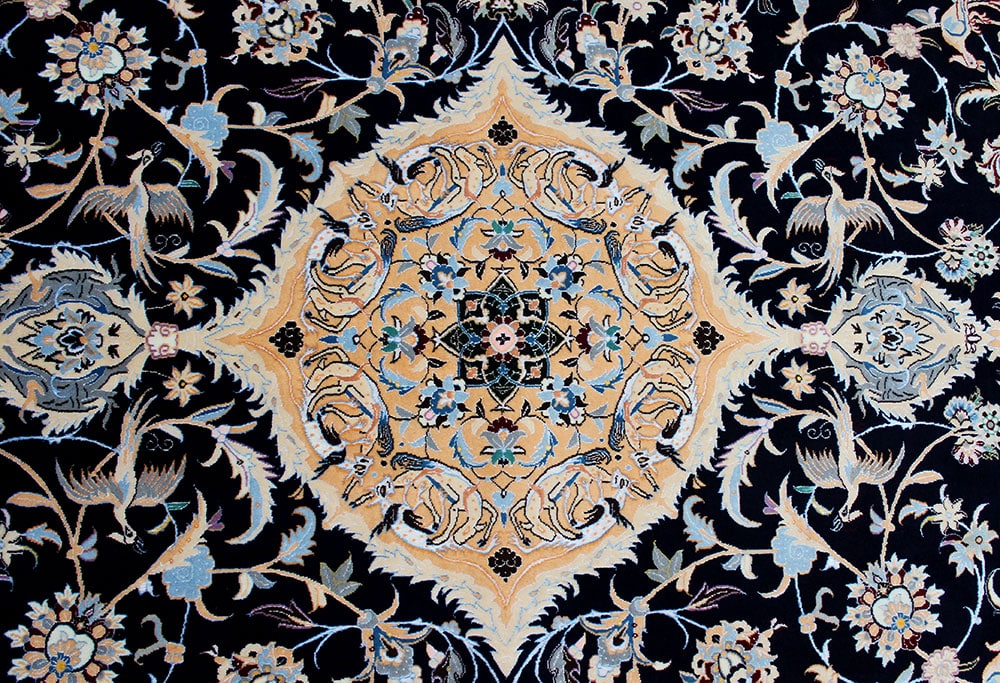
Persian Nain Carpet
Discover the Rich History of this Hand-Woven Carpet
The Nain Carpet Brand stands as one of the most impactful Persian carpet brands, tracing a narrative rich with both triumphs and challenges. How did this exquisite product, originating from a small town nestled in the heart of Iran, ascend to such remarkable renown? Join us to learn about the Nain Rugs history.
|
birthplace |
Warp |
Weft |
Dyeing |
Nain, Iran |
Cotton / Silk |
Wool / Fluff / Silk |
Herbal / Chimistical |
|---|
Where is the Nain City?

The Historic Heart of Nain City
Nain city (Also known as Naein or Nayin) is located in Isfahan province, situated on the desert plain. Nain is 135 km away from Isfahan city, at the heart of Iran. With a history spanning over 4000 years, Nain is among the ancient cities of Persia and was one of the five provinces of the Fars region, serving as the capital of the renowned Achaemenid government 2,500 years ago.
As of 2015, the population of the city was estimated to be around 27,000 people. Culturally renowned for their warmth and integrity, the people of Nain reflect the rich tapestry of their heritage. While many have transitioned to modern industrial pursuits, echoes of tradition persist. Carpet weaving, a craft that once defined the town's identity, continues to thrive alongside ancillary businesses like material dyeing, carpet cleaning, and carpet trading.

What is Nain Rug?
Arthur Cecil Edwards provides insights into the Nain carpet, stating that the weavers, experienced in spinning fine coils for thin and delicate fabrics, arranged the carpet skeins to achieve 2222 knots per inch, resulting in unparalleled texture within Iran. Due to its novelty and limited production, the Nain carpet sold remarkably well.
The emergence of Nayin carpets in Tehran, the capital, can be traced back to the 1940s, during the early years of World War II. This trend significantly bolstered the art of carpet weaving in the region and expanded its reach. Edwards further notes that during World War II, Tehran's market flourished, and Nain rugs gained recognition as some of the finest in Iran.
As new social, political, and cultural conditions emerged globally, Nain carpets found wider markets, attracting not only more weavers from Nain but also artisans from other regions. Interestingly, prior to around 1930, the people of Nain specialized in weaving delicate fabrics used as robes in Iranian culture. The shift in clothing culture, coupled with the burgeoning demand for carpets, spurred entrepreneurial spirit among the first producers.
Moreover, owing to its competitive pricing and superior quality, the Nain carpet swiftly secured its place in the ancient Persian carpet market, thanks to the region's merchants. With its distinctive creativity, it caters to diverse tastes and needs across all quality levels. Today, as lifestyles modernize and occupations evolve, the practice of carpet weaving has naturally declined in popularity.
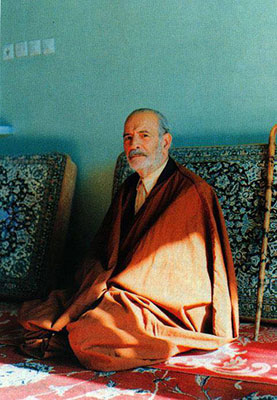
Fathollah Habibian (1903-1995)
Who Was the First Idea?
Fathollah Habibian (1903-1995) operated one of the most renowned workshops in Na’in and is often referred to as ‘the father of Nain rugs’. Collaborating with his brother Mohammed since their school days, Fathollah Habibian is credited with designing and weaving some of the world’s finest Nain carpets.
Under the established arrangement, weavers crafted carpets for the Habibian team in exchange for wages, with the team providing the design, materials, and specifications. Any deviation from the exacting standards was swiftly addressed. Mrs. Alemeh, a seasoned weaver who worked with the Habibian group 60 years ago, recounts an incident from her past:
"One day, while was weaving a carpet at home, she was startled by commotion emanating from her neighbor's house. Hastening to investigate, she discovered that the master craftsman of the Habibian team was dissatisfied with the subpar quality of a carpet's texture. The master-worker according to the rules, promptly removed the flawed carpet from the loom and cast it aside in the yard."
This anecdote underscores the renown of the Habibian brand for its unwavering commitment to quality and beauty. Based on this commitment to quality, a wave of innovation swept through the Nain carpet industry, with masters, merchants, and designers collaborating to develop new designs and explore untapped markets. Notable designs like Shaari and Akhavan or Pahlavan Safaei are named in honor of their creators, symbolizing the continued evolution and creativity within the Nain carpet tradition. They produce many valuable carpets, from economical options to luxurious and antique handmade Nain carpets.
Brief Overview of Technical Details
Design and Pattern:
Nain carpets draw considerably more inspiration from their neighbor, the Isfahan carpet. This influence runs deep in the minds of Naini designers, allowing them to seamlessly incorporate the artistic essence of Isfahan City. From modeling after the turquoise domes of historical buildings to intricate designs of Isfahan tiles, Nain carpets exude a sense of cultural fusion. Moreover, Nain carpets boast remarkable flexibility in design, offering a diverse range of options beyond the iconic Medallion/Corner design. Variations include Hunting Ground, Multiple-Panels, Tree, Animal motifs, and even Overall Flower designs.
Quality:
As a distinctive advantage, Nain carpets are crafted in various qualities, distinguished by the fineness and density of each knot per centimeter. Higher density indicates finer quality, while lower density suggests the use of larger knots and less delicate material. Nain carpets are typically categorized into three tiers: 4 La (exceptionally fine and rare quality), 6 La (fine quality), and 9 La (standard quality). The term 'La' translates to 'Layer' in Farsi, offering a nuanced insight into the craftsmanship. Explore the accompanying visuals for a clearer depiction:
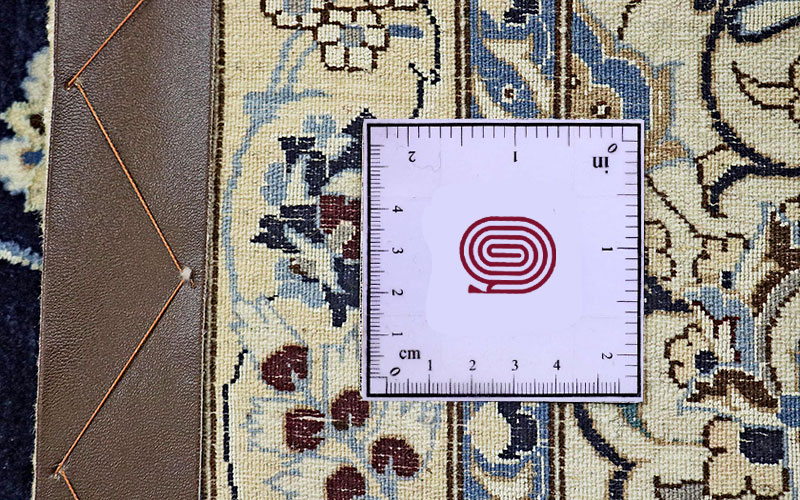
The knots are showing = 4La, 1 000 000 - 1 300 000 knots per square meter.
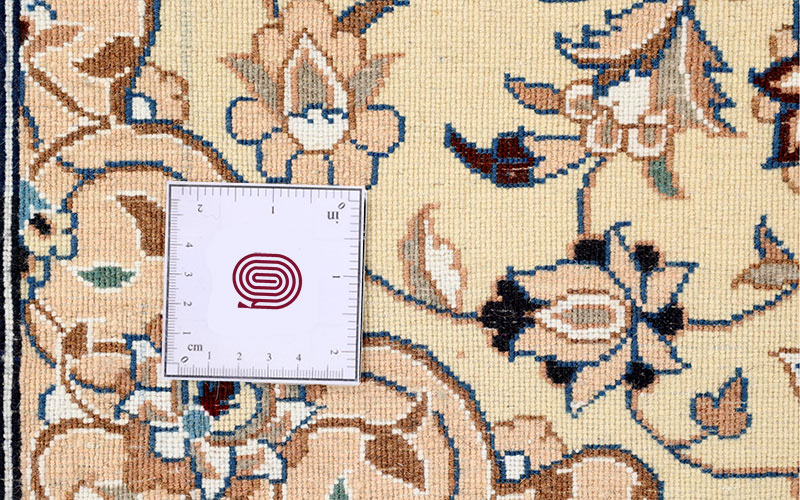
The knots are showing = 6La, 850 000 - 1 000 000 knots per square meter.
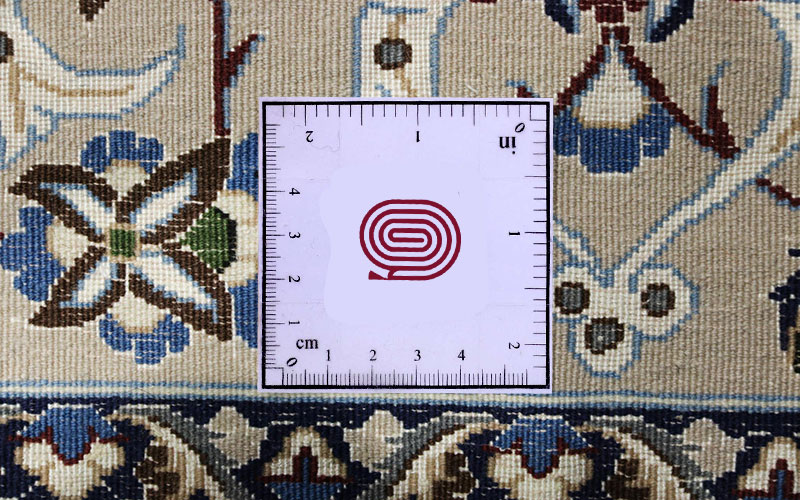
The knots are showing = 9La, 400 000 - 500 000 knots per square meter.
